-
 Bitcoin
Bitcoin $109,459.7682
2.44% -
 Ethereum
Ethereum $2,598.6052
6.29% -
 Tether USDt
Tether USDt $1.0003
0.00% -
 XRP
XRP $2.2734
3.95% -
 BNB
BNB $661.4886
1.58% -
 Solana
Solana $155.4825
4.35% -
 USDC
USDC $0.9999
-0.02% -
 TRON
TRON $0.2838
1.04% -
 Dogecoin
Dogecoin $0.1740
8.25% -
 Cardano
Cardano $0.6047
9.04% -
 Hyperliquid
Hyperliquid $40.2302
6.50% -
 Sui
Sui $2.9863
10.05% -
 Bitcoin Cash
Bitcoin Cash $509.5786
0.60% -
 Chainlink
Chainlink $13.8156
6.03% -
 UNUS SED LEO
UNUS SED LEO $9.0142
0.69% -
 Avalanche
Avalanche $19.0337
8.68% -
 Stellar
Stellar $0.2438
5.17% -
 Toncoin
Toncoin $2.9012
3.59% -
 Shiba Inu
Shiba Inu $0.0...01210
6.20% -
 Litecoin
Litecoin $90.0882
7.05% -
 Hedera
Hedera $0.1597
8.53% -
 Monero
Monero $326.3340
2.88% -
 Polkadot
Polkadot $3.6365
9.32% -
 Bitget Token
Bitget Token $4.6162
2.72% -
 Dai
Dai $1.0001
0.00% -
 Ethena USDe
Ethena USDe $1.0002
-0.01% -
 Uniswap
Uniswap $7.6403
10.47% -
 Pepe
Pepe $0.0...01060
12.03% -
 Aave
Aave $281.3664
7.56% -
 Pi
Pi $0.4992
1.76%
Is there a risk of over-issuance of USDT?
Tether uses reserve backing, minting/burning, and regulatory compliance to prevent USDT over-issuance, but transparency and full audits are still needed to maintain trust.
Apr 06, 2025 at 07:07 pm
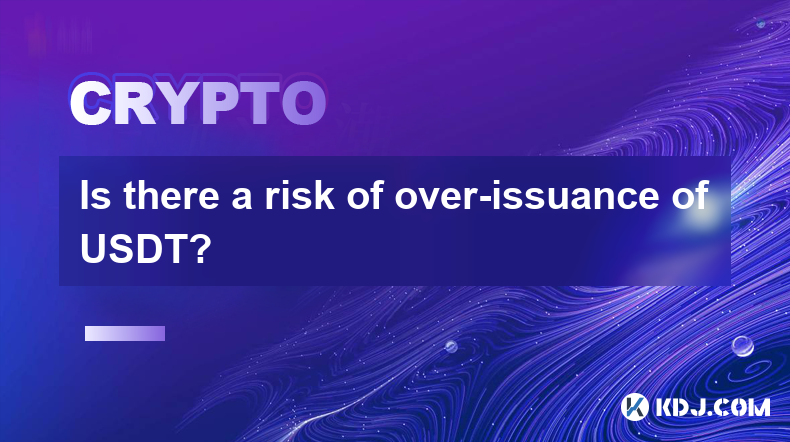
Tether (USDT) is a popular stablecoin that aims to maintain a 1:1 peg with the US dollar. Given its widespread use in the cryptocurrency market, concerns about the potential over-issuance of USDT have been raised. Over-issuance refers to the creation of more tokens than the reserves backing them, which could lead to a loss of trust and a potential collapse in the stablecoin's value. This article will explore the mechanisms in place to prevent over-issuance, the transparency and auditing processes, and the potential risks and consequences if over-issuance were to occur.
Mechanisms to Prevent Over-Issuance
Tether Limited, the company behind USDT, has implemented several mechanisms to prevent over-issuance.
Reserve Backing: Tether claims that each USDT token is backed by an equivalent amount of US dollars held in reserve. This reserve is supposed to be held in a combination of cash, cash equivalents, and other assets. The idea is that for every USDT in circulation, there should be a corresponding dollar in the reserve.
Minting and Burning: USDT tokens are minted when new tokens are issued and burned when tokens are redeemed. The minting process is supposed to be tied directly to the deposit of US dollars into the reserve, ensuring that the total supply of USDT does not exceed the reserve. Conversely, when USDT is redeemed, the corresponding amount of dollars is withdrawn from the reserve, and the tokens are burned.
Regulatory Compliance: Tether Limited is subject to various regulatory requirements, which include maintaining adequate reserves. Compliance with these regulations is intended to prevent over-issuance by ensuring that the company adheres to strict financial standards.
Transparency and Auditing Processes
Transparency and regular audits are crucial for maintaining trust in USDT and preventing over-issuance.
Attestations: Tether has released periodic attestations from independent accounting firms, such as Moore Cayman. These attestations provide a snapshot of Tether's reserves at a specific point in time. However, these are not full audits and have been criticized for their limited scope and frequency.
Quarterly Reports: Tether has started to release quarterly reports that provide more detailed information about its reserves. These reports include breakdowns of the types of assets held in the reserve, such as cash, bank deposits, and other investments. While these reports offer more transparency, they are still self-reported and not independently verified.
Calls for Full Audits: There have been ongoing calls from the cryptocurrency community for Tether to undergo a full, independent audit. Such an audit would provide a more comprehensive and trustworthy assessment of Tether's reserves and help to alleviate concerns about over-issuance.
Potential Risks and Consequences of Over-Issuance
If over-issuance were to occur, it could have significant repercussions for the cryptocurrency market.
Loss of Trust: If it were discovered that Tether had issued more USDT than it had in reserves, it would likely lead to a loss of trust among users. This could result in a mass sell-off of USDT, causing its value to plummet and breaking its peg to the US dollar.
Market Instability: USDT is widely used as a trading pair and a store of value within the cryptocurrency market. A collapse in its value could lead to widespread market instability, affecting the prices of other cryptocurrencies and potentially causing a broader market crash.
Regulatory Scrutiny: Over-issuance could attract increased regulatory scrutiny, not just for Tether but for the entire stablecoin industry. This could lead to stricter regulations and potentially hinder the growth and adoption of stablecoins.
Legal Consequences: If over-issuance were found to be intentional, Tether Limited could face legal consequences, including fines and potential criminal charges. This could further damage the company's reputation and impact its ability to operate.
Historical Incidents and Responses
There have been several incidents in the past that have raised concerns about the potential over-issuance of USDT.
2017 Price Manipulation Allegations: In 2017, a report by the Wall Street Journal alleged that Tether was being used to manipulate the price of Bitcoin. While the report did not directly address over-issuance, it raised questions about the integrity of Tether's operations.
2018 New York Attorney General Investigation: In 2018, the New York Attorney General's office launched an investigation into Tether and its sister company, Bitfinex. The investigation uncovered that Tether had issued USDT without sufficient backing, leading to a $18.5 million settlement. This incident highlighted the risks of over-issuance and the need for better oversight.
Tether's Response: In response to these incidents, Tether has taken steps to improve its transparency and compliance. The company has released more detailed reports about its reserves and has engaged with regulators to address concerns. However, critics argue that more needs to be done to fully address the risk of over-issuance.
The Role of the Cryptocurrency Community
The cryptocurrency community plays a crucial role in monitoring and addressing the risk of over-issuance of USDT.
Vigilance and Advocacy: Community members can stay vigilant by closely following Tether's reports and advocating for more transparency and independent audits. Social media and forums provide platforms for users to voice their concerns and push for change.
Alternative Stablecoins: The community can also explore and support alternative stablecoins that offer greater transparency and security. This competition can pressure Tether to improve its practices and reduce the risk of over-issuance.
Education and Awareness: Educating new users about the risks associated with USDT and the importance of transparency can help to build a more informed and resilient community. This can reduce the impact of any potential over-issuance and promote healthier market dynamics.
The Future of USDT and Stablecoins
The future of USDT and the broader stablecoin market will depend on how well the industry addresses the risk of over-issuance.
Regulatory Developments: As regulatory frameworks for stablecoins evolve, they may impose stricter requirements on issuers like Tether. This could include mandatory full audits and more detailed reporting, which would help to mitigate the risk of over-issuance.
Technological Innovations: Advances in blockchain technology and smart contract platforms could lead to the development of more secure and transparent stablecoin systems. These innovations could reduce the risk of over-issuance by automating reserve management and increasing the visibility of reserve assets.
Market Dynamics: The stablecoin market is highly competitive, with new entrants constantly challenging established players like Tether. This competition can drive improvements in transparency and security, reducing the risk of over-issuance and fostering a healthier market environment.
Common Questions Related to the Risk of Over-Issuance of USDT
Q: What is over-issuance in the context of USDT?
A: Over-issuance refers to the creation of more USDT tokens than the reserves backing them. This means that for every USDT in circulation, there should be a corresponding US dollar in the reserve. If more tokens are issued than the reserve can support, it could lead to a loss of trust and a potential collapse in the stablecoin's value.
Q: How does Tether prevent over-issuance?
A: Tether uses several mechanisms to prevent over-issuance, including reserve backing, minting and burning processes, and regulatory compliance. Each USDT token is supposed to be backed by an equivalent amount of US dollars held in reserve. The minting of new tokens is tied to the deposit of US dollars into the reserve, and tokens are burned when redeemed.
Q: What transparency measures does Tether have in place?
A: Tether releases periodic attestations from independent accounting firms and quarterly reports that provide more detailed information about its reserves. However, these are self-reported and not full audits. There have been ongoing calls for Tether to undergo a full, independent audit to provide a more comprehensive assessment of its reserves.
Q: What are the potential consequences of over-issuance of USDT?
A: Over-issuance could lead to a loss of trust among users, causing a mass sell-off of USDT and a potential collapse in its value. This could result in market instability, increased regulatory scrutiny, and legal consequences for Tether Limited.
Q: Have there been any historical incidents related to over-issuance of USDT?
A: Yes, there have been incidents that raised concerns about over-issuance. In 2017, allegations of price manipulation involving Tether surfaced, and in 2018, the New York Attorney General's investigation found that Tether had issued USDT without sufficient backing, leading to a settlement.
Q: What role does the cryptocurrency community play in addressing the risk of over-issuance?
A: The community can stay vigilant, advocate for more transparency and independent audits, explore alternative stablecoins, and educate new users about the risks associated with USDT. This can help to build a more informed and resilient community and reduce the impact of any potential over-issuance.
Q: What does the future hold for USDT and the stablecoin market?
A: The future will depend on regulatory developments, technological innovations, and market dynamics. Stricter regulations, technological advancements, and competition could drive improvements in transparency and security, reducing the risk of over-issuance and fostering a healthier market environment.
Disclaimer:info@kdj.com
The information provided is not trading advice. kdj.com does not assume any responsibility for any investments made based on the information provided in this article. Cryptocurrencies are highly volatile and it is highly recommended that you invest with caution after thorough research!
If you believe that the content used on this website infringes your copyright, please contact us immediately (info@kdj.com) and we will delete it promptly.
- Coinbase's Crypto Conquest: The Liquifi Acquisition and the Token Revolution
- 2025-07-03 16:30:12
- Neo Pepe Coin: Can This Meme Coin Make Waves in the 2025 Crypto Market?
- 2025-07-03 16:50:12
- Toncoin, Dogecoin, and Shiba Inu: A Wild Ride in the Crypto Zoo
- 2025-07-03 16:30:12
- AllScale: Stablecoin Solutions Empowering Small Businesses – A New York Perspective
- 2025-07-03 16:35:12
- Neo Pepe Coin Presale: Is This Meme Coin a Serious Crypto Investment?
- 2025-07-03 17:10:11
- Memecoins to Buy in July 2025: Riding the Hype or Investing Wisely?
- 2025-07-03 17:10:11
Related knowledge

How to choose a reliable USDT exchange service provider? How to identify?
Jun 12,2025 at 03:15pm
Understanding the Role of USDT in Cryptocurrency TradingUSDT (Tether) is one of the most widely used stablecoins in the cryptocurrency market. It is designed to maintain a 1:1 peg with the U.S. dollar, offering traders and investors a way to hedge against volatility while remaining within the crypto ecosystem. Choosing a reliable USDT exchange service p...
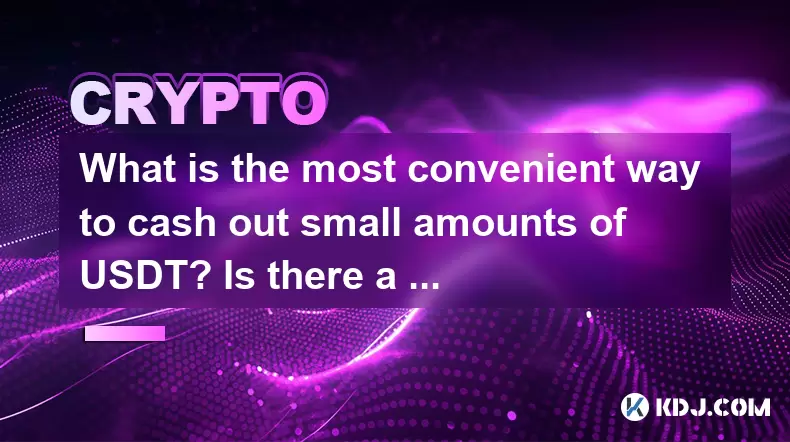
What is the most convenient way to cash out small amounts of USDT? Is there a shortcut?
Jun 11,2025 at 11:00pm
Understanding the Need to Cash Out Small USDT AmountsCashing out small amounts of USDT can be a challenge for many crypto users. Traditional methods often involve high fees, minimum withdrawal limits, or cumbersome verification processes that make it inefficient for small transactions. The key is to find a method that balances speed, cost, and convenien...
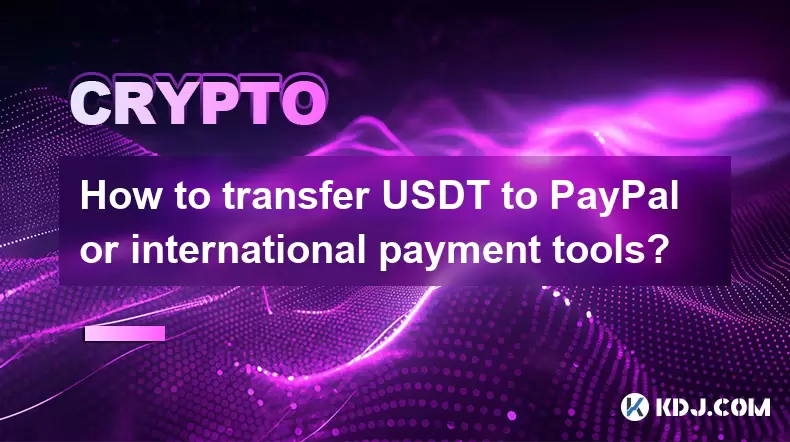
How to transfer USDT to PayPal or international payment tools?
Jun 15,2025 at 05:28am
Understanding the Basics of USDT and PayPal IntegrationUSDT (Tether) is a stablecoin pegged to the US dollar, offering blockchain-based value transfer with minimal volatility. PayPal, on the other hand, is a centralized digital wallet that facilitates fiat currency transactions globally. Direct integration between USDT and PayPal does not exist due to t...
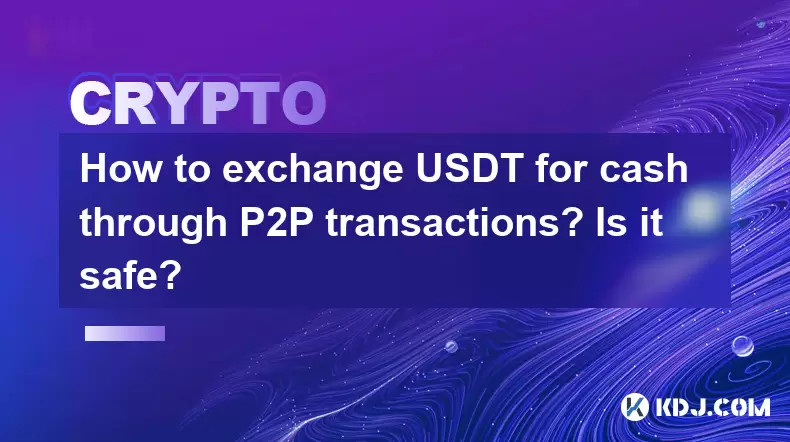
How to exchange USDT for cash through P2P transactions? Is it safe?
Jun 18,2025 at 07:56am
Understanding USDT and P2P TransactionsTether (USDT) is a stablecoin pegged to the value of the US dollar, making it a popular choice for users who want to avoid the volatility of other cryptocurrencies while still participating in the crypto ecosystem. Peer-to-peer (P2P) transactions allow individuals to trade directly with each other without going thr...
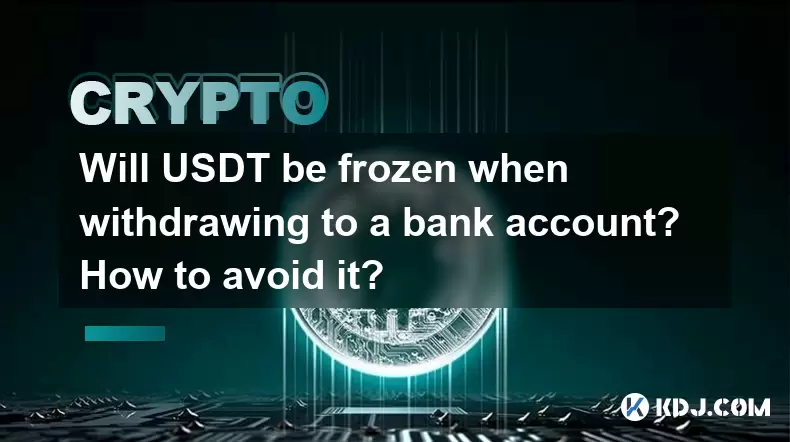
Will USDT be frozen when withdrawing to a bank account? How to avoid it?
Jun 15,2025 at 10:03am
Understanding USDT Withdrawals and Bank Account Freezing RisksWhen users decide to withdraw USDT (Tether) to a bank account, one of the most common concerns is whether their funds will be frozen during the process. This concern stems from real-life cases where individuals have encountered delays or restrictions when converting digital assets into fiat c...
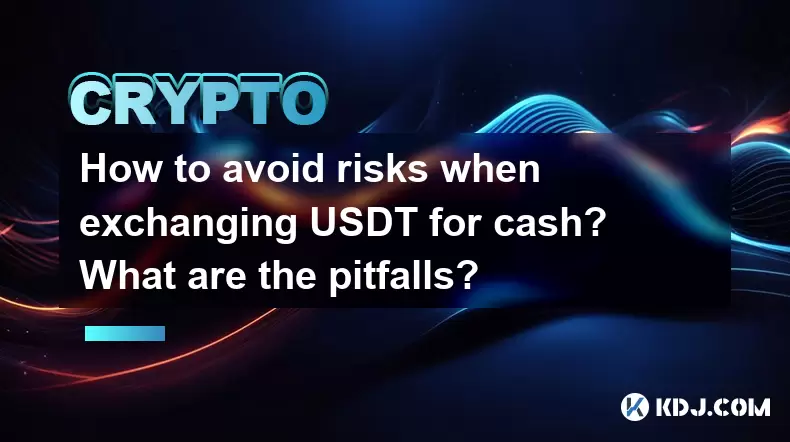
How to avoid risks when exchanging USDT for cash? What are the pitfalls?
Jun 11,2025 at 08:14pm
Understanding the Risks of Exchanging USDT for CashWhen exchanging USDT (Tether) for cash, users must be aware of the potential risks involved. As a stablecoin pegged to the US dollar, USDT is widely used in crypto transactions due to its price stability. However, converting it into fiat currency like USD or CNY can expose users to several pitfalls, inc...

How to choose a reliable USDT exchange service provider? How to identify?
Jun 12,2025 at 03:15pm
Understanding the Role of USDT in Cryptocurrency TradingUSDT (Tether) is one of the most widely used stablecoins in the cryptocurrency market. It is designed to maintain a 1:1 peg with the U.S. dollar, offering traders and investors a way to hedge against volatility while remaining within the crypto ecosystem. Choosing a reliable USDT exchange service p...

What is the most convenient way to cash out small amounts of USDT? Is there a shortcut?
Jun 11,2025 at 11:00pm
Understanding the Need to Cash Out Small USDT AmountsCashing out small amounts of USDT can be a challenge for many crypto users. Traditional methods often involve high fees, minimum withdrawal limits, or cumbersome verification processes that make it inefficient for small transactions. The key is to find a method that balances speed, cost, and convenien...

How to transfer USDT to PayPal or international payment tools?
Jun 15,2025 at 05:28am
Understanding the Basics of USDT and PayPal IntegrationUSDT (Tether) is a stablecoin pegged to the US dollar, offering blockchain-based value transfer with minimal volatility. PayPal, on the other hand, is a centralized digital wallet that facilitates fiat currency transactions globally. Direct integration between USDT and PayPal does not exist due to t...

How to exchange USDT for cash through P2P transactions? Is it safe?
Jun 18,2025 at 07:56am
Understanding USDT and P2P TransactionsTether (USDT) is a stablecoin pegged to the value of the US dollar, making it a popular choice for users who want to avoid the volatility of other cryptocurrencies while still participating in the crypto ecosystem. Peer-to-peer (P2P) transactions allow individuals to trade directly with each other without going thr...

Will USDT be frozen when withdrawing to a bank account? How to avoid it?
Jun 15,2025 at 10:03am
Understanding USDT Withdrawals and Bank Account Freezing RisksWhen users decide to withdraw USDT (Tether) to a bank account, one of the most common concerns is whether their funds will be frozen during the process. This concern stems from real-life cases where individuals have encountered delays or restrictions when converting digital assets into fiat c...

How to avoid risks when exchanging USDT for cash? What are the pitfalls?
Jun 11,2025 at 08:14pm
Understanding the Risks of Exchanging USDT for CashWhen exchanging USDT (Tether) for cash, users must be aware of the potential risks involved. As a stablecoin pegged to the US dollar, USDT is widely used in crypto transactions due to its price stability. However, converting it into fiat currency like USD or CNY can expose users to several pitfalls, inc...
See all articles

























































































